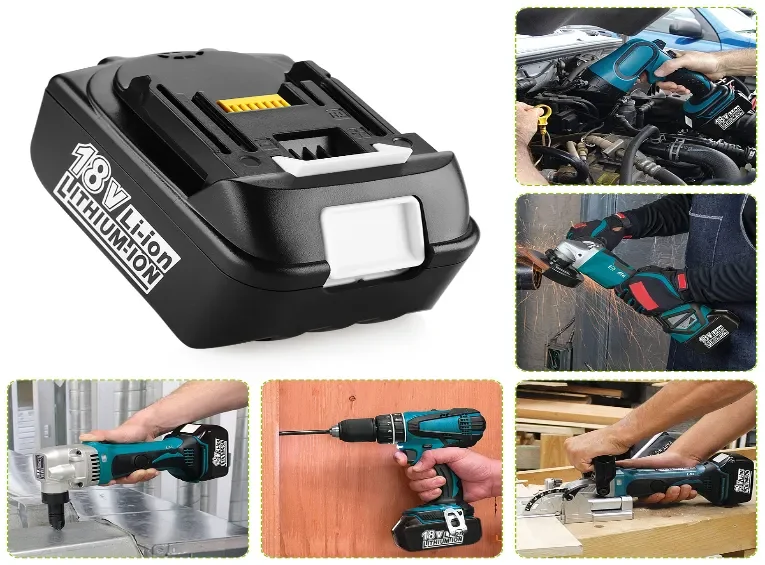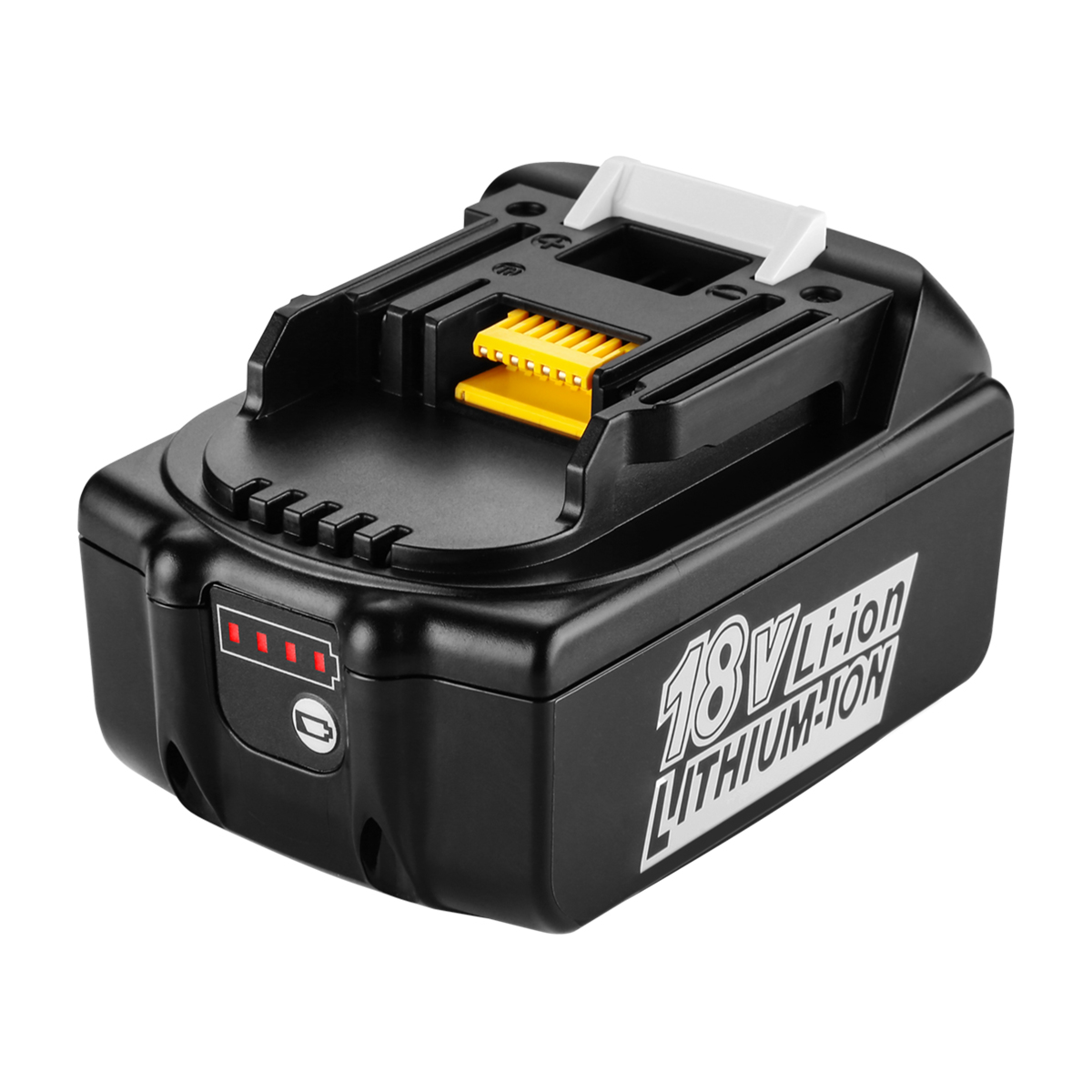5 Tips for Properly Storing Your Makita 18V Drill Battery
Maintaining your Makita 18V Li-ion packs between jobs isn’t “set-and-forget.” Proper storage preserves capacity, prevents BMS lockouts, and minimizes safety risks. Follow these expert answers to the five most common storage questions.

1. What State of Charge Should I Use?
For long‐term storage, keep your Makita 18V drill battery at roughly 30–50 percent state of charge—around 40 percent is ideal. At this mid-range voltage, lithium-ion cells experience minimal stress from both high-voltage balancing currents and deep-discharge protection circuits. Storing at full charge accelerates capacity fade through constant balancing, while low charge risks triggering the battery’s cutoff and damaging cells. By settling at 30–50 percent, you minimize self-discharge, preserve cycle life, and ensure the pack is ready for a quick top-up before use.
Li-ion cells degrade fastest at 0% or 100% state-of-charge.
- Target: ~30%–50% SOC (≈ 18.0–18.4V open-circuit).
- Why: Balances chemical stress and avoids BMS lockouts on your drill battery.
2. Where’s the Ideal Storage Location?
For best results, store your Makita 18V drill battery in a stable, climate-controlled area—ideally between 10°C and 25°C (50°F–77°F)—that stays dry and avoids direct sunlight, radiators, air-conditioning vents, or uninsulated exterior walls. Keep it off concrete or metal surfaces by using a plastic shelf, insulated bin, or its original case, and include silica-gel packets to regulate humidity. A dedicated, clutter-free spot ensures the battery sees consistent temperatures and no accidental shorts, preserving capacity and extending service life.
Temperature and humidity are the enemies of cell health.
- Keep it cool: 15°C–25°C, away from direct sunlight or uninsulated garages.
- Control moisture: Use sealed plastic bins with silica-gel packets.
- Why: Higher temps accelerate calendar aging; moisture corrodes contacts.
3. Why Avoid Metal or Conductive Surfaces?
Storing your Makita 18V drill battery on metal or other conductive surfaces risks accidental short circuits that can rapidly discharge the pack, generate dangerous heat, and damage both the cells and their protective circuitry. Even tiny metal shavings, dust or moisture bridging the terminals onto a conductive shelf can create a low-resistance path, leading to sparks, thermal runaway, or permanent cell degradation. By using an insulating plastic bin, wooden shelf or the original case, you eliminate that hazard, maintain safe storage, and preserve your battery’s lifespan.
Exposed terminals plus metal can create a dangerous short.
- Use: Non-conductive sleeves, wood or plastic shelves.
- Optional: Cover terminals with Kapton or masking tape.
- Benefit: Eliminates spark and thermal-runaway risk for your drill battery.

4. How Often Should I Inspect and Rotate Packs?
Inspect and rotate your Makita 18V drill batteries every three months: during each check, remove each pack from storage, wipe the terminals with a dry, lint-free cloth to clear dust or oxidation, and visually examine the housing for any swelling, cracks, or heat damage. Then swap the oldest stored pack into service and move the most recently used pack to the back of your storage area, ensuring a first-in, first-out rotation that prevents any battery from remaining idle for more than six months. This disciplined cycle of inspection and rotation keeps all cells active, balances calendar aging across your fleet, and catches early signs of decline before they compromise performance or safety.
Stored batteries still self-discharge and drift in balance.
- Interval: Every 3–4 months, check voltage and top up to 30%–50% SOC if below 18V.
- Rotate: Cycle the oldest drill battery back into service first.
- Why: Prevents deep-discharge lockouts and evens out packaging.
5. What Orientation and Setup Is Best?
Mechanical stress on latches and contacts leads to seating problems.
- Stand upright: Latch fully engaged, on dividers or racks.
- Prevent tipping: Use battery racks or foam inserts to keep packs vertical.
- Why: Preserves housing integrity and ensures reliable tool connection.
Bonus Tip: Fire-Resistant Container for Bulk Storage
When you’ve got multiple spares, containment adds safety.
- Choose: A certified Li-ion safe box with vents and silica-gel slots.
- Placement: Away from flammables and on a non-combustible surface.
- Why: Gives you an extra layer of protection in the unlikely event of thermal runaway.
By storing your Makita 18V drill batteries at the right SOC, in a cool dry spot, on non-conductive surfaces, with regular inspections and upright orientation—and using a fire-resistant box when you have many spares—you’ll maximize capacity, extend cycle life, and eliminate safety hazards.